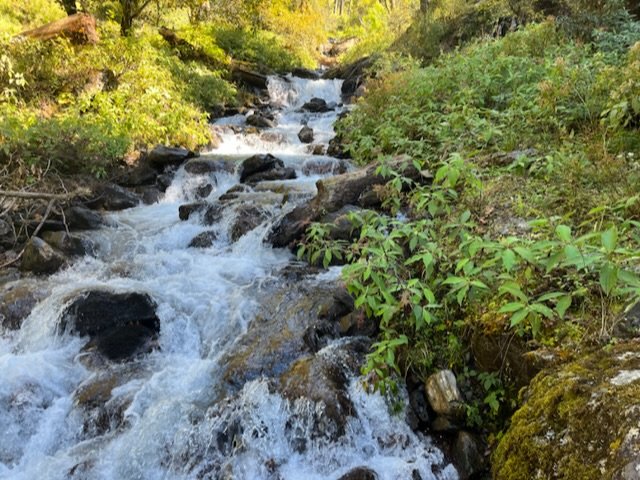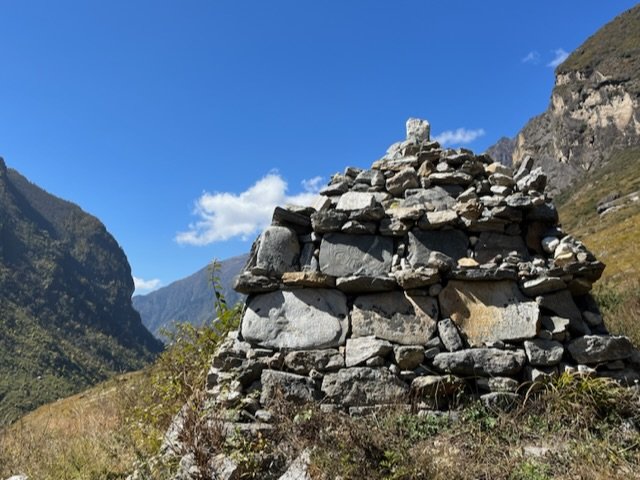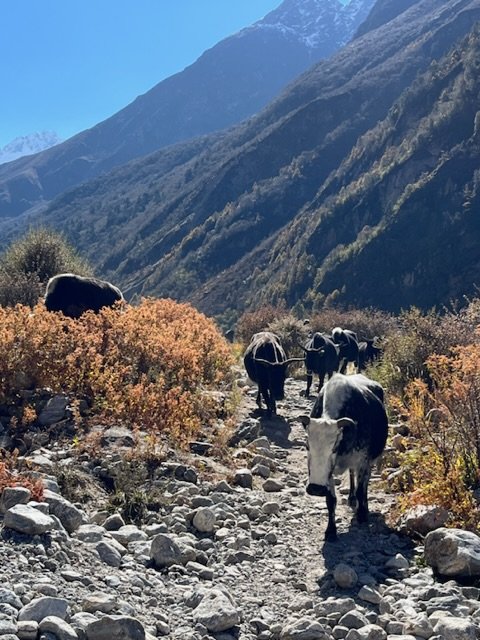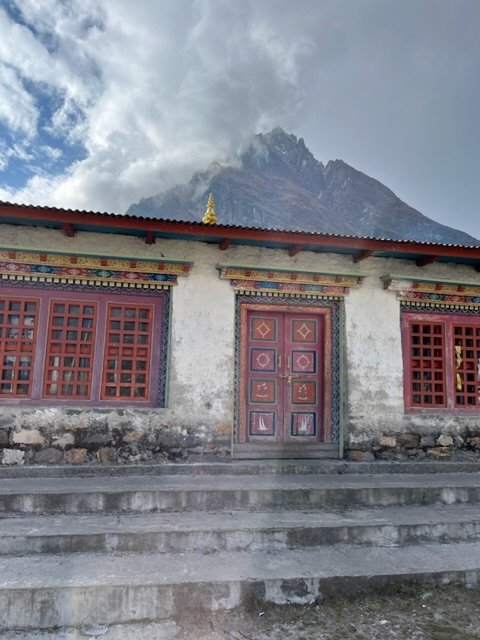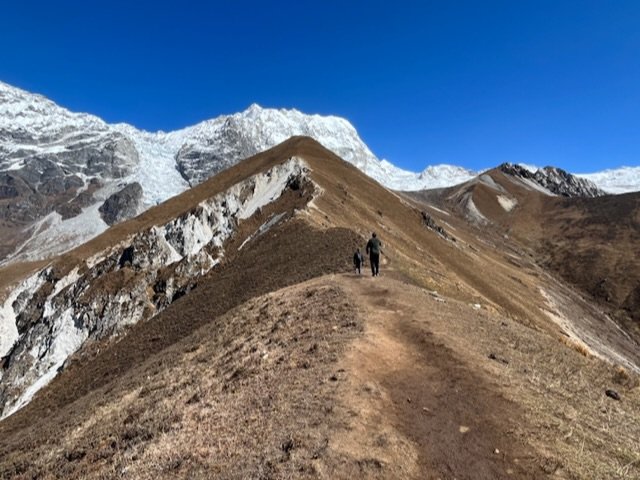Langtang Valley Trek (part 2), Nepal
In 2015 a major earthquake rocked Nepal. The Langtang valley was hit particularly hard. When the earth shook these small mountain towns, built with earth and stone, crumbled. And then, triggered by the earthquake, an avalanche launched down on the small hamlet of Langtang. The town was decimated. Over 300 people lost their lives that day. For one small mountain village it was an unimaginable loss. A local from a nearby town told us that one day there was a celebration in Langtang. He still has pictures. The next day the village was gone. So were his friends and family. Those who were away at the time came home to find nothing but heartbreak. It was a devastating tragedy for this community. With little assistance from the government they are trying to restore their lives and livelihoods.
They have rebuilt.
In a place where supplies take days of travel on the backs of men and mules, and large cargo costs a fortune by helicopter, it is a tremendous feat. But the Tamang people of this region are strong and resilient. Today there is a new town of Langtang. Travelers must cross the avalanche rubble—a difficult path, physically and emotionally. The loss is palpable. At each bright stupa along the way and with each fluttering prayer flag, there is a bit of heartbreak colored with hope.
The Langtang Valley trek is a bit off the beaten path. Not as popular with tourists as the Annapurna circuit or Everest basecamp treks. Even still, these rural, high mountain communities are dependent upon tourism dollars which completely dried up after the earthquake.
And then Covid.
It has been 8 long, rough years. We chose this place deliberately, not only because if its natural beauty but also to be a part of the effort to support the Langtang families and communities as they rebuild their lives.
With one day of hiking behind us and 7 more to go, we rise early in Rimche. We pack in the dark, trying not to disturb sleeping guests through the thin walls and creaking floorboards. The sun is barely up and we are ready to go. Our hostess smiles and places a package in my hands. In choppy, carefully spoken English she says, “sister, take this to sister in Langtang. marigold. For me. Please. You have a room.”
Marigold Guest house is up ahead in the town of Langtang. 9 miles or so up the trail. We had no prearranged place to stay. We were winging it. And so, like that, we became couriers on the trail. Delivering bright colored fabric wrapped carefully in plastic to one guest house. Then, prescious greens from the garden to the next lodge in the highlands. From town to town we carried little bundles to our hosts. A quirky arrangement that benefitted all. For them, we became guaranteed guests at the lodges run by their family or friends. For us, peace of mind that a warm meal and a bed await us at the end of each day.
We cross bridges and continue to climb, finding ourselves deep in the heart of the Langtang Valley.
Ferns are left behind in the shade with the trees. Broad leaves and conifers give way to low shrubs with small leaves and spikey branches. Bright blue sky, crisp air and tinges of yellow and orange. Afternoon clouds roll in. Autumn in the mountains. What look to be large rose hips dangle brightly like ornaments on skeletal, grey branches.
We are higher and drier now. Thinner air. Thinner topsoil. It’s rocky underfoot. We traverse our way up. From stone to slippery stone we carefully cross streams—water gushing from the hillsides feeding the milky blue Langtang river as it rushes its way down the mountain valley.
The snow on the peaks is fresh.
We stop in our tracks for a deep breath as a small meadow opens up, picture framing the mountains ahead. We stop more often now. Monkeys perch on boulders-watching us, scurrying, playing peek a boo in the branches.
The towns up here are small. villages connected by a footpath. There are patches of gardens but this is not farm country. Soon there will be snow.
Everything is carried up. Food. Firewood. Furnishings.
Sometimes the trail feels lonely and vast. Sometimes it feels like a highway. Travelers and villagers, yaks with bells, burrows with baskets. Ponys and porters. We yield and we nod. Sometimes the greeting is hello. Sometimes it’s namaste. We step aside for the animals. Sometimes they step aside for us. We rest and drink tea. Everyone is walking—either up or down.
Sea buckthorn fruit clings to tangles of branches like clusters of bright orange salmon eggs. They are gathered in baskets, boiled and juiced. Served warm—tangy and sour. Tall glasses of sunshine. We sip slowly, resting for a bit on a low stone wall. We get moving again. Maybe with a little extra pep. It’s probably a superfood.
We are above treeline now. The mountains rising high with craggy, snowy peaks. The sun is warm but the air is cold. We are glad we bought gloves in Kathmandu.
Kyanjin Gompa is the town at the end of the trail. The monestary above the town is unassuming. Painted white with wood carved doors and colorful adornments. It is small and beautifully simple. Tall, faded flags border one side, waving in the breeze. The little town is surrounded by a maze of low stone walls (presumably to keep the yaks out. But they come in anyway), many guesthouses (some look like small hotels), a yak cheese factory and three bakeries. Tiny shops with tin roofs sell Tibetan souvenirs, yak wool blankets, and toilet paper.
We started this trek at 7,809 ft above sea level. We are now at Kyanjin Gompa. 12,700 ft. It’s been a long way up. We stay 2 nights. We drink lattes and eat apple cake and cookies at two of the bakeries. The best coffee on our trip is in this little faraway town. We pack flat bread and yak cheese from our guest house into our backpacks. Snacks for the trail.
A small older man sits on the ground placing yak pies on a stone in the sun to dry. He is there in the morning. Still there in the evening. Wearing only a thin button up shirt. We are bundled in fleece sweaters and down jackets, gloves and hats.
Wood is hard to come by up here. It has to be carried. At great cost. The yak pies are free and the cold is coming. When the sun drops behind the mountains, it’s already here. In the morning there is ice.
A group of young techies from Thailand is at our guest house. They are friendly and tired and cold. We have little in common and we become fast friends. For one of them the hike was too much. She hitched a pony ride up. The going was slow and steady, made slower when her guide had to stop and harvest his entire cabbage field along the way. He heard that yaks were coming down.
Gardens are precious. And Yaks are voracious.
Our hosts are Tibetan Buddhists. They keep altars in the dining/ living room where we eat and rest. Ornate yet simple. beautiful. In the morning they come to light the fire. They bring burning herbs, wafting fragrant smoke from room to room. They stop at the altar to chant and pray. Continue chanting while stoking the fire. They go out for more wood. Sometimes kneeling by the altar. Sometimes lighting a candle. Burning incense. Still quietly chanting. It feels a bit voyeuristic. Like we are in the way. But this is just part of the flow of the day here. prayers are not private. This is not for show.
Our guesthouse is not heated but our sleeping bags and thick quilts keep us warm. We are up at dawn for a day hike up the peak. Early rising guests huddle by the morning kitchen fire. Hot coffee. Ginger tea. Muesli with hot milk
It’s straight up to Kyanjin Ri. Elevation gain is quick. It’s a zig zag trail of loose scree. But without our heavy packs we scramble up like mountain goats. Some groups turn back. It’s not easy. We go on. We have acclimated. Barely noticing the effects of elevation. The top is take your breath away beauty in every direction. Prayer flags sharing goodwill on the breeze against a backdrop of bright blue. Some of them are faded and tattered. Some brightly new. Jagged ridges, snowy peaks as far as the eye can see. Looking north across the Himalaya is Tibet.
This is wild country. Stunningly harsh. Stunningly beautiful.
We sit. Drink water. Have a snack. Then, Continue up. Kyanjin Ri 2 is one peak higher. It looks daunting. Most people stop at Kyanjin 1. A few go on. Dylan and Jon are game. I am reluctant. I don’t like heights. Peak one felt like an accomplishment. It felt safe. I felt strong. Here, the ridge is narrow, the trail is crumbling. There is no room for even a little stumble. Thousands of feet straight down. Half way across the narrow saddle I sit down. I need to feel my whole body touch the earth. I get up, try again. Jon and Dylan are ahead, backs to me. There is nothing to hold on to. I get up and keep going. I think I want to do this. My heart starts beating just a little too fast. A twinge of panic. I find a spot just wide enough to hunker down. This is not my thing. I wave to Jon and Dylan to go on. I will wait here. Nearly 15,000 feet in the air on my little perch with the birds—wings slicing through the air like a crack of a whip.
Only my ego nudges me to go up. I let that go. Right here is perfectly enough.
Jon and Dylan together reach the top. 15,600 feet. This is not Everest but they are in the heavens. They savor the views in every direction. They have my phone to take pictures.
I am content to sit in the stillness. Nobody passes by. It is pure nothingness and everythingness all at once. Just the wind, the diving birds and me. When they return I am up. We make our way down together, the whole way.
In some ways leaving is easier than coming here. In other ways it is harder.
In truth there has not been one easy day on this journey. But each day has been perfect.
I would do it again.





